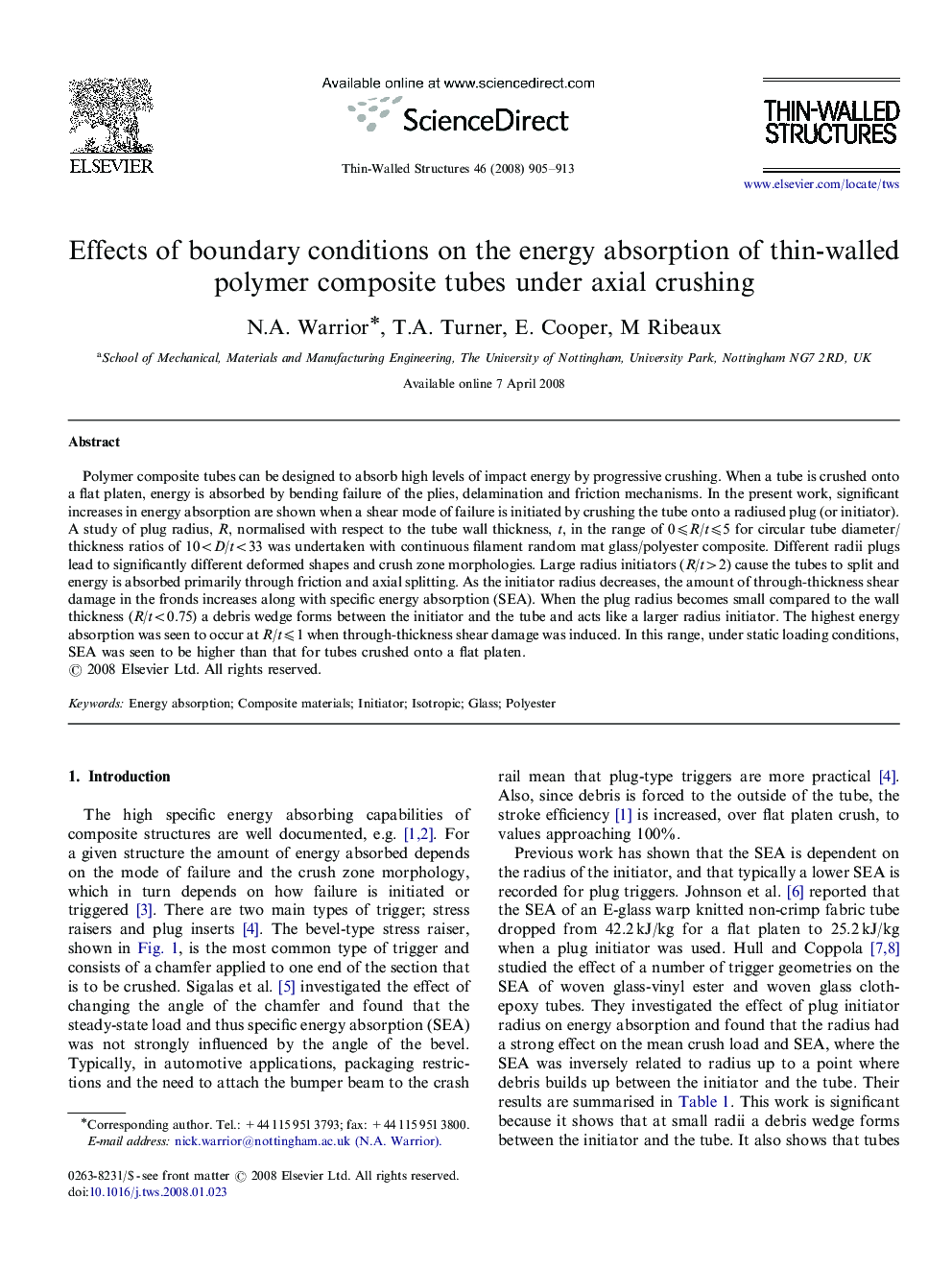| Article ID | Journal | Published Year | Pages | File Type |
|---|---|---|---|---|
| 309984 | Thin-Walled Structures | 2008 | 9 Pages |
Polymer composite tubes can be designed to absorb high levels of impact energy by progressive crushing. When a tube is crushed onto a flat platen, energy is absorbed by bending failure of the plies, delamination and friction mechanisms. In the present work, significant increases in energy absorption are shown when a shear mode of failure is initiated by crushing the tube onto a radiused plug (or initiator). A study of plug radius, R, normalised with respect to the tube wall thickness, t, in the range of 0⩽R/t⩽5 for circular tube diameter/thickness ratios of 10
